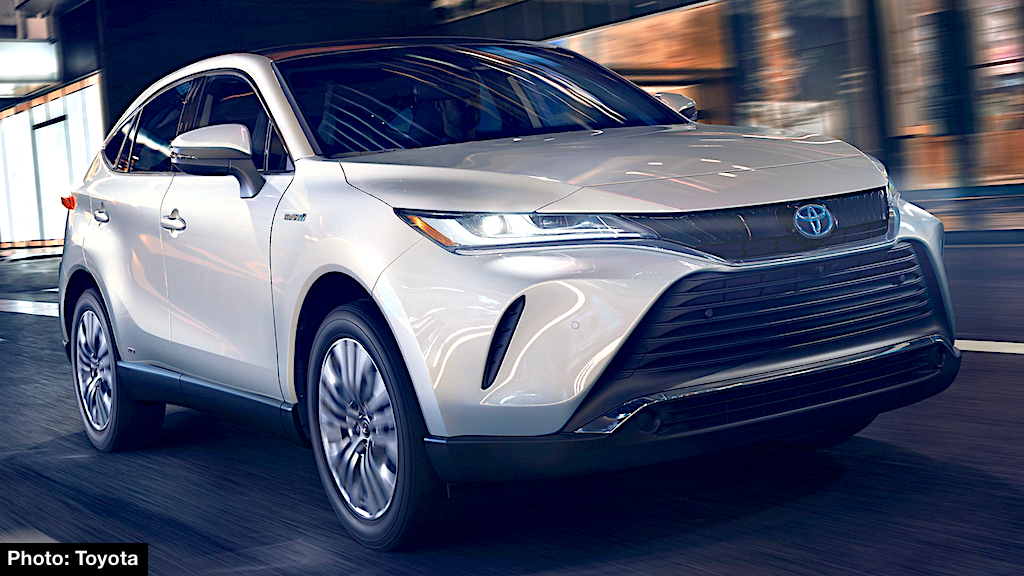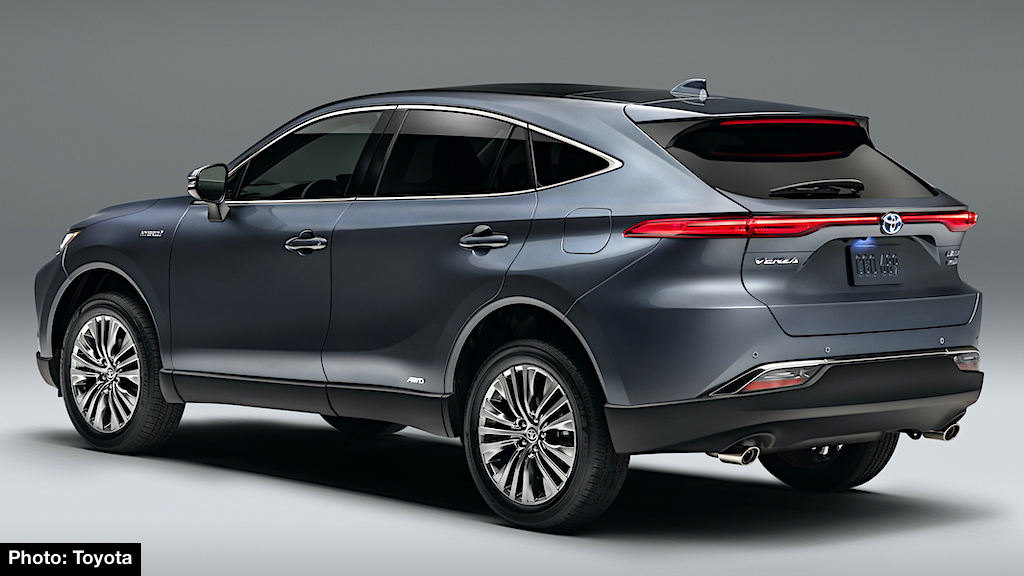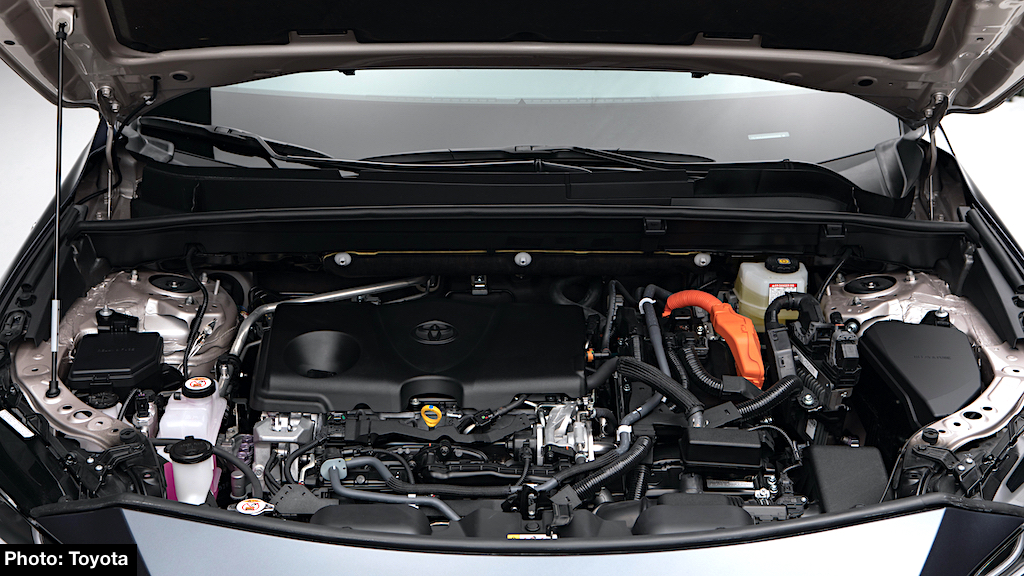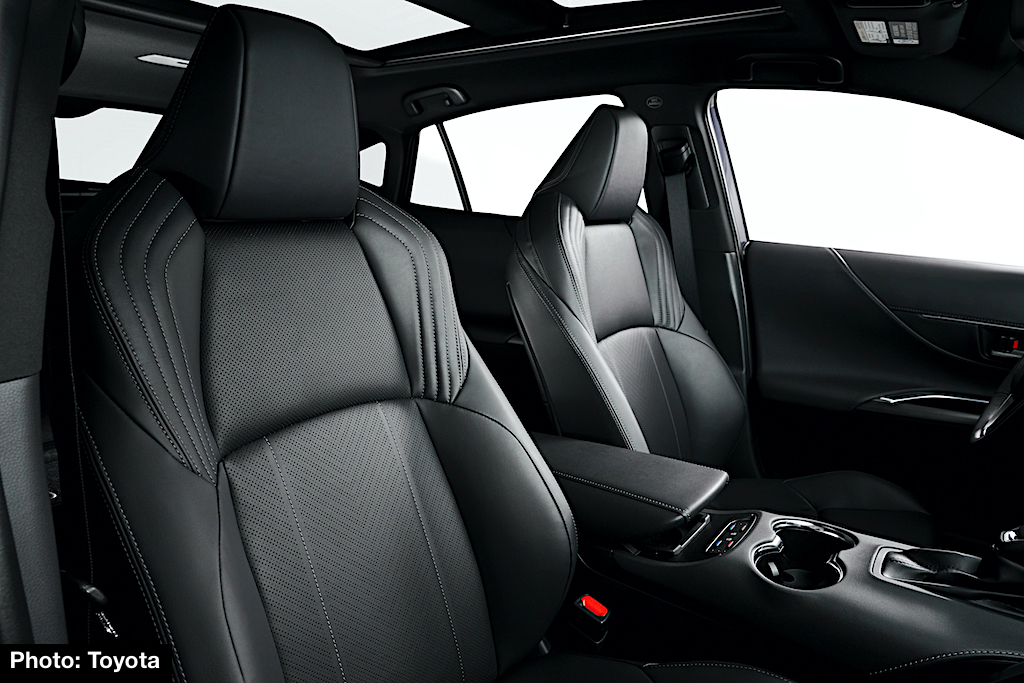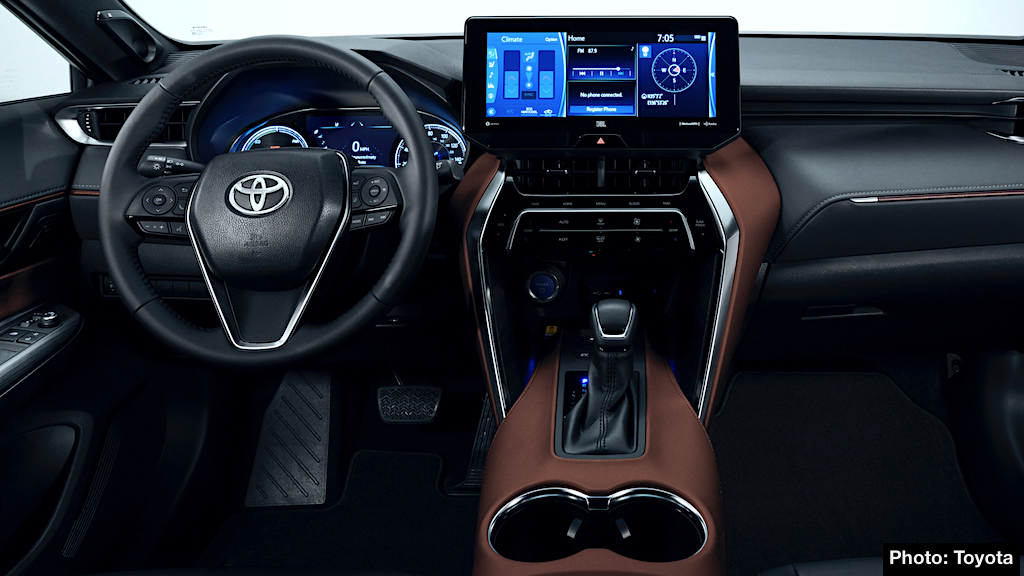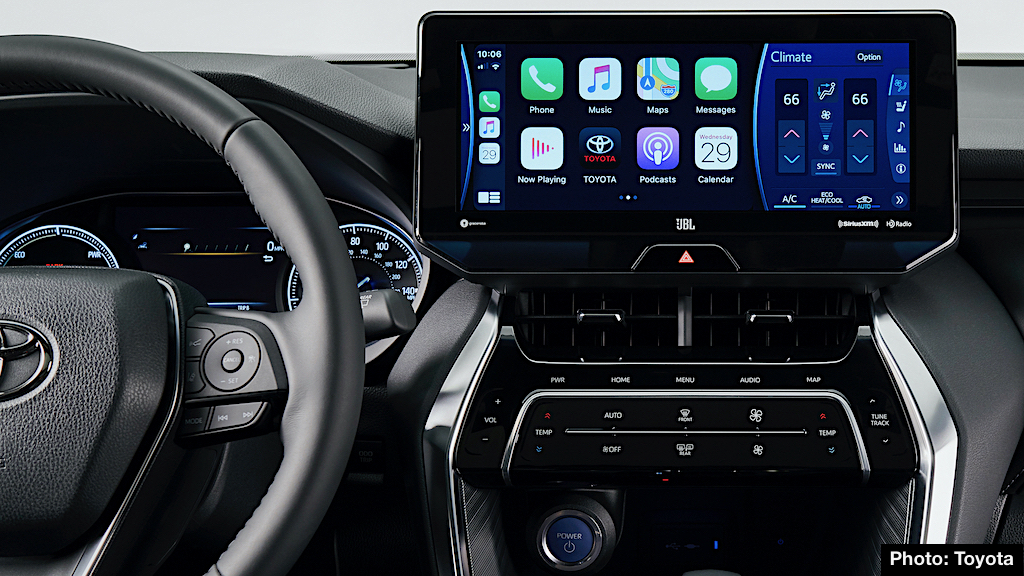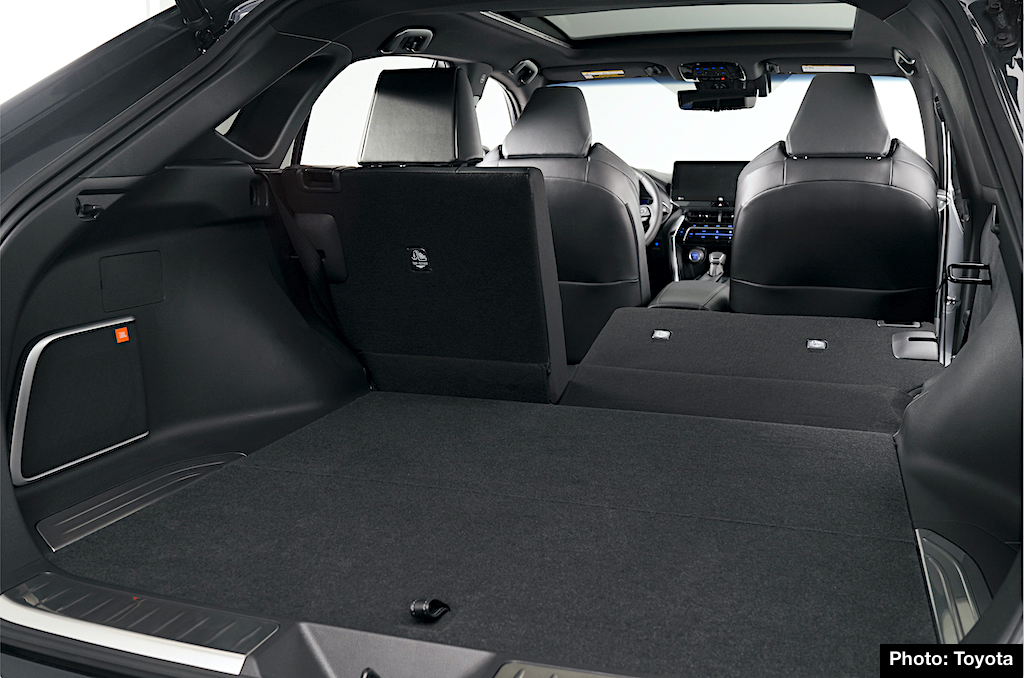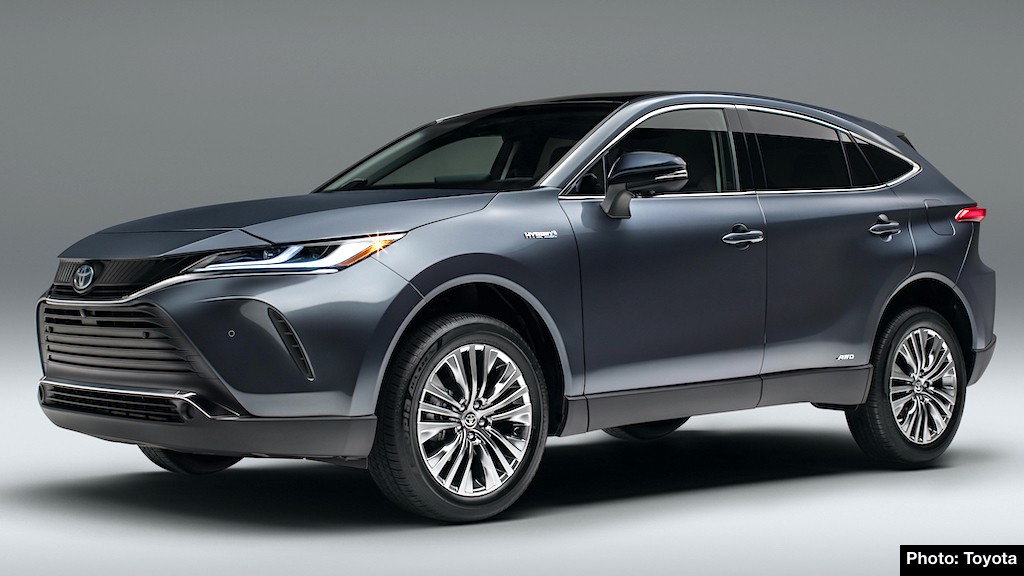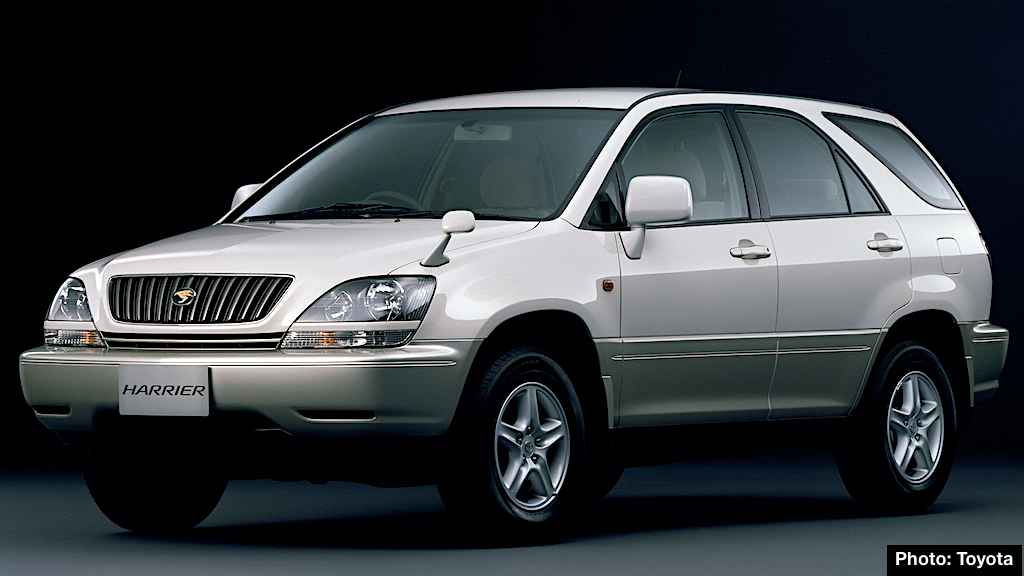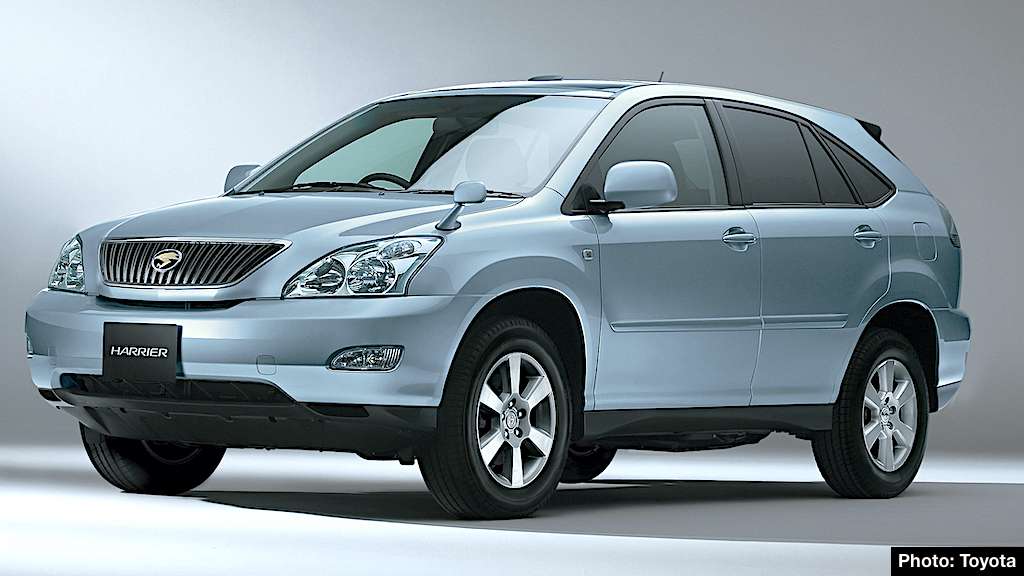By Steve & Tamami Laser
Whenever we visit Japan, one of our biggest dreams is to bring a vehicle back with us that’s not available in the U.S. We tested the Toyota Voxy Hybrid and Sienta on previous trips to Nagoya and loved them both.
If we could select a crossover for our dream garage, the new Toyota Harrier would be our top choice. That’s why we’re thrilled to learn that it’s coming here this summer – with a name change to Venza.
Toyota planned to reveal the new model at the New York Auto Show. The crossover brings back the “Venza” name that was used on a previous U.S. market model.
However, the auto show was cancelled due to the Coronavirus pandemic. So Toyota and its creative partners produced a video at the nearly empty headquarters campus in Plano, Texas, and at the home of an executive.
Meanwhile, Toyota Motor Corp. announced its plans for the new Harrier – a twin of the Venza – expected to go on sale in Japan next month (scroll down for the Harrier story).
Let’s take a look at the Venza first. As a two-row midsize crossover, the Venza fits neatly between the Highlander and RAV4, riding on the Toyota New Global Architecture (GA-K) platform. All Venza models (LE, XLE and Limited) will be equipped with the advanced Toyota Hybrid System II and Electronic On-Demand All-Wheel Drive.
The Hybrid features a 2.5-liter DOHC 4-cylinder gas engine, electric motors, a new lithium-ion battery pack, and selectable Normal, Eco, Sport and EV drive modes. Total output is rated at 219 horsepower. The AWD system uses a rear-mounted electric motor to power the rear wheels for enhanced traction when needed. Toyota says Venza LE has impressive preliminary manufacturer-estimated fuel economy of 40 MPG combined.
The cabin is dressed with a high-tech look and comfortable seating for five. The power driver’s seat includes an auto slide-away function for easy entry and exit. Available features include heated and ventilated front seats, S-FLOW cooling technology for the air conditioning system, and Star Gaze™ panoramic glass roof with transparent and “frosted” modes.
Venza XLE and Limited have a 7-inch color Multi-Information Display with a Hybrid System Indicator that shows system output and regeneration status. Also available is a 10-inch color Head-Up Display that projects information onto the windshield for easy viewing by the driver.
In the infotainment and connectivity department, Venza excels with a standard 8-inch touchscreen system on LE and XLE. While a 12.3-inch touchscreen with Dynamic Navigation and JBL sound is standard on Limited and available on XLE. Both systems include Apple CarPlay™ and Android Auto™, Amazon Alexa compatibility, SiriusXM® and HD Radio® plus Toyota Remote Services and Safety Connect® trial subscriptions.
Split-folding rear seats offer flexibility for transporting passengers and long or oversize cargo. With the rear seats up, Toyota says Venza offers 36.3 cu. ft. of space for gear. The lithium-ion battery pack is installed under the rear seats so it doesn’t intrude into cabin or cargo space.
All models are fitted with Toyota Safety Sense 2.0 including a Pre-Collision System with Daytime/Low-Light Vehicle and Pedestrian Detection plus Dynamic Bicycle Detection, Full-Speed Range Dynamic Cruise Control, Lane Departure Alert with Steering Assist, Lane Tracing Assist and Road Sign Assist. Also available is a Bird’s Eye View Camera with Perimeter Scan.
New Toyota Harrier for Japan
The differences between the new Toyota Harrier (below) and the Venza appear to be slight. Beyond the model name, the fourth-generation Harrier features right-hand drive (of course).
It also offers an expanded array of powertrain choices. Hybrid models are available with front- or E-Four AWD. And there’s a gas 2.0-liter 4-cylnder non-hybrid with front or Dynamic Torque Control AWD.
Toyota says that Harrier’s design features a front view emphasizing its “sharp and fearless” styling through the continuity of lines flowing from the upper grille through the headlights. The side view offers a dynamically changing body cross-section, while the rear sports a thin, sharp line of taillights.
The interior design, with its wide center console, has “an imposing impression of a horse’s saddle.” Trim choices include synthetic leather and bentwood-inspired wood tones and piping. Harrier features a T-Connect SD navigation system with 12.3-inch display and SmartDevice Link.
The new Harrier, and the Venza, are scheduled to be built in Toyota City, Japan, at the Takaoka plant.
Harrier History – First Three Generations
Now, let’s take a quick trip down Harrier memory lane. The first-generation Toyota Harrier (1997-2003), shown below, was remarkably similar to the first-generation Lexus RX.
The reason for the different naming strategy was that the Lexus brand didn’t debut in Japan until 2005. Harrier was sold at Toyopet and Toyota Vista dealerships throughout Japan. Powerplant choices included the 1MZ-FE 3.0-liter V6 or 5S-FE 2.2-liter 4-cylinder gas engines.
The second-generation Harrier (2003-2013) was once again similar to the revamped Lexus RX and gained a hybrid version starting in 2005. The new models featured more refined, upscale styling along with a host of luxury features.
The third-generation Harrier (2013-2020) was unique for the Japan market and no longer shared its styling with the Lexus. Toyota said that “elegant velocity” was the design theme featuring long front and short rear overhangs plus a streamlined dynamism for the side profile. Harrier offered a choice of gas and hybrid models with front or AWD.
Note: Features, specifications and launch timing for the new Venza (U.S.) and Harrier (Japan) is subject to change without notice
News sources and photos courtesy of Toyota Motor Sales, U.S.A., Inc. and Toyota Motor Corp.
Story (commentary) © 2020 CarNichiWa.com
